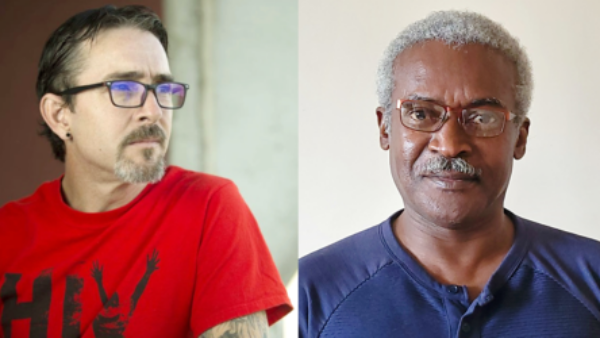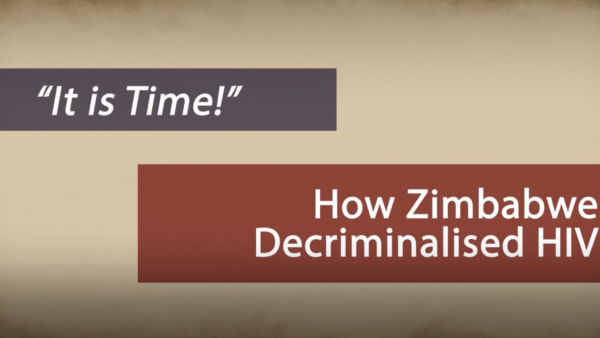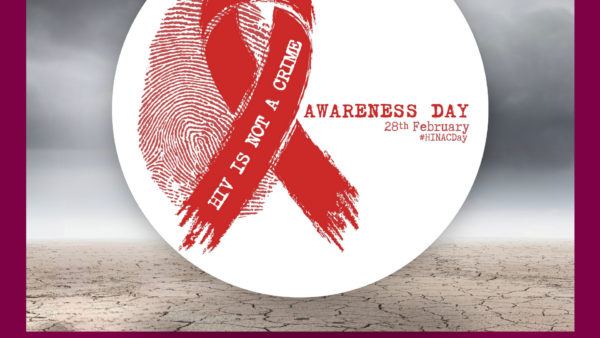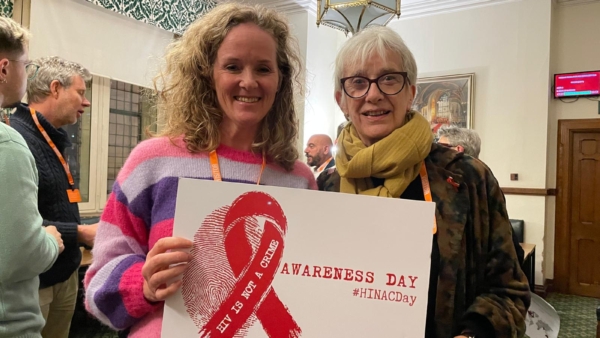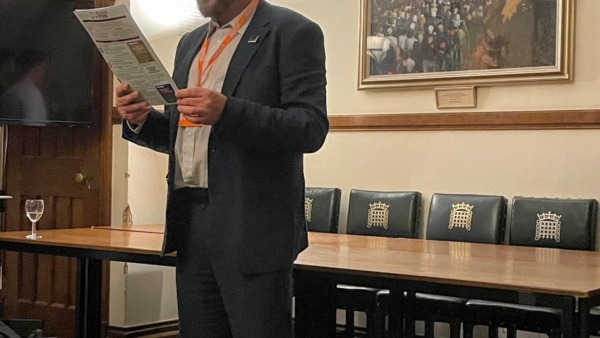Nushawn Williams Served Out His HIV-Related Sentence in 2010. Why Is He Still Not Free?
Nushawn Williams was four days from freedom when he received a letter in April 2010 informing him New York State officials were effectively reneging on the deal he had reached with the state 12 years earlier. Instead of walking out of Wende Correctional Facility upon satisfying the maximum time permitted by his plea agreement and re-starting his life at the age of 33, Williams remains in state custody more than 10 years after he expected to be released.
“I haven’t been home one day after age 19, not one time,” Williams, now 43, told TheBody in a telephone interview from Central New York Psychiatric Center, where he has been confined since 2014 under a rarely invoked New York law that allows extended detention after an inmate has completed their prison sentence.
There was no Article 10 of New York’s Mental Hygiene Law in 1999, when Williams accepted a prison sentence ranging from four to 12 years after having sex with dozens of women without disclosing he was HIV positive. One encounter was with a girl under the state’s legal age of consent, which marked Williams as a violent sexual offender. Article 10 permits the involuntary “civil confinement” of inmates deemed extraordinarily predatory. It was enacted in 2007, about a year after Williams became eligible for supervised release and began focusing on his life after prison.
“It wasn’t looking good for parole, so I started angling for my max [end of the maximum length of a prison sentence]: what kind of job I was going to do. I wanted to go to school for cybersecurity, go to ITT Tech, learn about computers,” said Williams, who would strategize with his wife during weekend visits every 45 days.
“We got to talk and actually plan,” Williams recalled of their private time together. “Her whole thing was me getting back my name in a positive manner, to show the world that people can change, people can go through a setback, bounce back, and change. And when I didn’t get to max out, that shattered everything.”
Patients or Prisoners?
Article 10 requires New York prison officials to notify the state attorney general’s Office of Mental Health (OMH) any time someone convicted of a sexual offense is nearing his or her release date. OHM staff preform a cursory review of each inmate’s history that clears most for release, but some cases are forwarded to a three-person review team that recommends whether a more extensive psychiatric analysis should take place.
It was such a panel that sent Williams a letter less than a week before his prison sentence was to end in 2010, notifying him he would be evaluated to determine whether he had a mental abnormality warranting extended detention. According to the most recent annual report on the Article 10 system from the attorney general’s office, inmates are notified they may face a new form of custody an average of less than two weeks prior to their release date.
Then–attorney general Andrew Cuomo, now governor of New York, wound up filing a court petition to transfer Williams from criminal to civil confinement, and eventually Williams found himself in the legal proceeding he thought he had avoided by pleading guilty.
“If I went to trial [after my initial arrest], this is what would’ve happened, I felt this is what it would’ve looked like,” Williams said. It took a Chautauqua County jury just over an hour to determine Williams had a mental abnormality, and a judge ordered him moved from prison to the mental health hospital in central New York, where he remains indefinitely.
“The [New York] supreme court has held [Article 10] does not violate double jeopardy, because the goal here is not punishment, it’s treatment,” said Jessica Botticelli, principal attorney at Mental Hygiene Legal Service in New York, who works with Article 10 defendants but has no direct involvement with Williams’ case. “For the clients going through this, it feels like additional punishment, but the courts see it as treatment,” Botticelli said. “If you want my opinion, it’s a crock of shit.”
While individuals confined under Article 10 are supposed to be considered patients instead of inmates, New York’s mental health facilities offer fewer liberties than in traditional prisons, said Catherine Hanssens, executive director of The Center for HIV Law and Policy, who has worked with Williams for several years.
“The restrictions on them are very similar to what I used to see when I was representing death row inmates in New Jersey: no confidentiality, rooms constantly searched for contraband, [Williams’] particular religious items destroyed or removed and disrespected,” said Hanssens, who recalled being denied permission to send Williams a book about the unwritten rules of social relationships because the text was inconsistent with his therapeutic plan.
“There is a limitation on reading materials that would not have at all been a problem for him when he was an actual prisoner,” Hanssens said. “When he was actually serving time on these offenses, he had conjugal visits. When he was actually serving time, he was a trustee, which is a position you earn.”
Officials at Central New York Psychiatric Center have refused visitation to Williams’ mother and sister because his sister once had a relationship with someone who is currently detained at the facility, Williams said.
“Where do they do that, deny your mother to come see you because of the actions of my sister? This is the type of place this place is,” said Williams, who noted he also had more due-process and appeal rights if he was accused of wrongdoing while incarcerated at Wende, a maximum-security prison.
“Here, you’re guilty without even having a hearing or any of that stuff,” Williams said. “[Staff] writes notes just to make sure when the attorney general gets [the inmate file] there’s something in there to make you look like you haven’t changed, to make you look like you are still facing the same activities that you was facing when you was 19 years old.
“I haven’t had a misbehavior report in this facility in almost four years, but they don’t write none of that inside your report,” Williams said. “They don’t write about the positive adjustments you’ve made, the help that you constantly give to individuals that can’t control themselves—they don’t put any of that in it.”
The absence of any type of confidentiality for Article 10 detainees belies the presumption that treatment is being administered, Hanssens said.
“Nobody there, including Nushawn, gets actual therapy,” she said. “If you agree that effective therapy requires some assurances of confidentiality, it’s not there. There is nothing that they say to anybody on staff that can’t and won’t be put in their records.”
During the period between their supposed prison release date and the time of their Article 10 hearing, inmates can choose whether to remain in their correctional facility or be transferred to an OMH hospital. Botticelli, whose organization advocates for Article 10 defendants, said she advises clients to remain in prison unless they absolutely need to leave.
“Once they are transferred to an OMH facility, everything that they do or don’t do is recorded in some way, and can be used against them at their Article 10 trial,” Botticelli said. “It’s a no-win situation for them.”
Less than 1% of sexual offenders are civilly committed under Article 10 in New York, which is one of 20 states with a law permitting confinement beyond an individual’s prison sentence; however, 83% of those who are referred for an Article 10 trial are convicted. The New York attorney general’s office did not respond to interview requests, but its 2019 report on Article 10 noted, “It is obvious that civil management is making a difference in helping to protect communities from dangerous sex offenders.”
“It’s Not for Me to Make It out of Here”
Article 10 detainees are entitled to a review of their case each year to determine if they can be released, but even at those hearings, it’s difficult to see them as anything other than inmates.
“It has been determined that unless the client can provide a medical reason why they should not be shackled in this manner, then they will be: handcuffed, [put in] ankle shackles, [a] waist chain connecting to the ankle shackles, handcuffs connected to the waist chain with the black box, which is like a padlock which makes it so they can’t move their wrists,” Botticelli said. “I don’t think [the department of corrections] shackles [prisoners] that way.”
A backlog of cases means it’s not uncommon for a patient to be waiting for one annual review by the time another rolls around, Botticelli said. All Article 10 hearings have been postponed by COVID-19 restrictions, and while a handful of New York prisoners were released due to the pandemic, none were Article 10 detainees, Botticelli said.
Williams has not had a single annual review of his case in the five years he’s been at Central New York Psychiatric Center, and he remembers the promises made by politicians at the time of his arrest that he would spend the rest of his life behind bars.
“It’s not for me to make it out of here,” Williams said. “It’s for me to die in this facility.”
His story—that of a young Black man from the streets of New York City being allegedly promiscuous with mostly white women in Jamestown, New York—made his case the most high-profile in the county’s history, according to the local newspaper that runs annual reassurances such as, “Nushawn to Remain in Civil Confinement” and “Williams Remains in Civil Confinement.”
Following his arrest, Williams was labeled, “A One-Man HIV Epidemic,” by a New York Times headline, while Newsweek called him, “The AIDS Predator.” Residual prejudice toward HIV-related offenses has colored the treatment Williams receives at the psychiatric center, while his media-alleged background as a teenage drug dealer, stick-up boy, and convicted child molester has prevented HIV/AIDS and LGBT groups from rallying to his cause, Hanssens said.
“He doesn’t fit the profile that a lot of our community likes to support,” said Hanssens, who doesn’t consider Williams paranoid for believing he will die in state custody. Williams was taken off his HIV medication for the first two years he was confined at the mental health facility, and resumed treatment only after attorneys with the governor’s office intervened.
“Part of his cynicism is based on what he has come to know,” Hanssens said. “The officials that operate [his facility] engage in half-truths and outright lies on multiple occasions, and yet their characterizations of what’s going on is far more likely to be believed.”
No Way Out?
Graduating from one of New York’s mental health facilities is nearly impossible, which is why almost all patients are released by a judge’s order, Botticelli said.
“There was a court case in one of the prior iterations of the treatment program. It was a four-phase program, and one of the courts found Phase Four didn’t exist,” said Botticelli, who noted the replacement program has a similar shortcoming.
Judges look favorably upon Article 10 patients developing a relapse prevention plan, but Botticelli recalls a doctor from Williams’ facility testifying in a separate case that she and other staff were explicitly prohibited from helping detainees develop such a plan.
“That is not something they do, that is not something they can edit or advise on, so clients have to come up with it themselves without much input from the people who are treating them,” Botticelli said. “I don’t like to sound cynical, but I feel like the program is designed so that our clients cannot complete it, cannot succeed in it, and cannot be released without the intervention of the court.”
There are no HIV-specific interventions at the facility in which Williams is confined, but he has tried to piece together a relapse prevention program consisting of group therapy and countless drug rehabilitation courses for marijuana, which he considers a trigger for his youthful abandon.
“I was naive, I was young, I was idiotic. I lived a reckless life,” he said. “For me, a lot of the stuff they have here—understanding tactics, understanding the things I’ve done in my past, how to respect the laws, how to put an effective plan into motion that you plan to stick by once released, how to hold down a job, how to file taxes, how to budget your money—those are things I feel I can grab onto.
“I see things differently now,” Williams added. “I didn’t know any of these things before going to prison. I was a teenager.”
